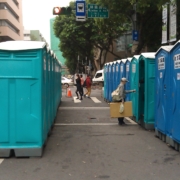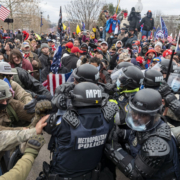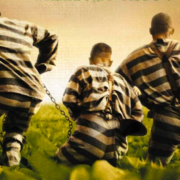Exploring how graffiti and street art calls attention to social justice issues
Graffiti and street art has a longstanding connection with political and social issues. Not only do we see this kind of activity proliferate when controversial issues are contested in urban public spaces, but we typically witness graffiti and street art when a grass roots social movement develops, or political or social revolution emerges.
In recent times lots of this type of graffiti and street art in support of ethnic, racial, and social justice issues has been produced. This work may be generic, like profanity laced tags against political leaders (e.g., Fuck Trump), etc., or it may involve more detailed and complicated types of communication including with different colors, shapes, and sizes, etc.
This whole cavalcade of icons, images, lettering, symbols, and words begs numerous interesting questions such as who is doing this kind of work? what is the range (e.g., what particular subjects do writers and artists focus on)? what effect (or impact) does it have? etc.
Some of these questions are more interesting and/or difficult to answer. Among the three previously listed ones, the effect of graffiti and street art that criticizes racial and ethnic injustice and promotes social justice are perhaps most interesting and are most needed for deeper inquiry.
Why? In recent times we have seen a considerable amount of graffiti and street art in support of the Black Lives Matter movement, and protesting the needless deaths of people like George Floyd and Breonna Taylor, the Russian invasion of Ukraine, Climate Change and other threats to our environment, and in support of LGBTQ+ Rights and Visibility, Immigration and Migrant Rights, Gender Equality, Women’s Rights and Indigenous Rights and Cultural Preservation
The question is how much impact does this work have?
On the plus side, graffiti and street art can bring awareness to pressing issues. And, despite its transient nature these forms of urban public art can have a lifespan beyond the surfaces it was originally applied to (through its reproduction through news and social media channels).
But who and how are subject populations (those that are exposed to graffiti and street art) affected by this work? Keep in mind that awareness does not necessarily mean that people are motivated to spring into action and engage in political activity that supports a particular political position.
Thus it’s important to measure the impact of graffiti and street art with different populations (e.g., from experts to nonexperts) using a multimethodological approach (e.g., surveys, interviews, focus groups, content analysis of news and social media coverage, etc.)
That being said, conducting this type of research that is rigorous and one to produce meaningful results is complicated and resource intensive.
One should not assume that if you do an examination of only one type of
In order to best understand a phenomenon it’s important to take a multi method approach.
Why? in any type of communication there are critical aspects to all types of communication including the creator/perpetrator, the communication vehicle and the interpretation.
Photo credit:
Photographer: Thomas Hawk
Title: Rest in Peace George Floyd












